After studying German and art history, Johannes Inama worked for more than 10 years at the Jewish Museum Hohenems, where he was interim director from 2001 to 2004, and has been director of the Küefer-Martis-Huus in Ruggell since 2004. In addition, he works as a freelance editor, author and exhibition curator for various institutions and projects. He is active on a voluntary basis in various initiatives, including the Visionscafé in Hohenems, which takes an active role in the development process of the town. Johannes Inama comes from Hohenems, Austria, where he now lives again. He is married and has two grown-up children.
Where and how did you grow up?
I grew up in Hohenems, in a family with four siblings, in a time and a region where there were still idyllic free spaces for us children. Forests and water exerted a magical attraction. We spent almost all our time in the nearby forest, built our huts there, smoked our first cigarettes and constantly explored up and down the terrain on our old bicycles and pedal scooters. We went to the little chapel at the clay hole or to the idyllic bathing spots on the Old Rhine, where we spent the afternoons jumping from the trees into the water, making fires and grilling our sausages. But there were also gang wars, scary neighbours and areas we were afraid of. Then parallel to the onset of puberty everything became more complicated, narrower and greyer.

Could you describe your professional background?
After graduating from high school, I studied German and Art History in Innsbruck. Along the way I worked as a photo assistant and in a carpentry workshop. These manual skills also led me to the museum sector. During my studies, I was already in charge of setting up exhibitions at the Jewish Museum in Hohenems. This developed into a permanent position as assistant director and finally as interim director of the museum. After more than ten years at the Jewish Museum, I was ready to reorient myself in 2004 and I intended to become a freelance copywriter and curator. At that time, the 50% position as director of the Küefer-Martis-Huus was being advertised, so I applied and I have now been an employee of the municipality of Ruggell in this capacity for over 15 years. That was very fortunate, because without this anchor, providing for my family would have been quite difficult at times.
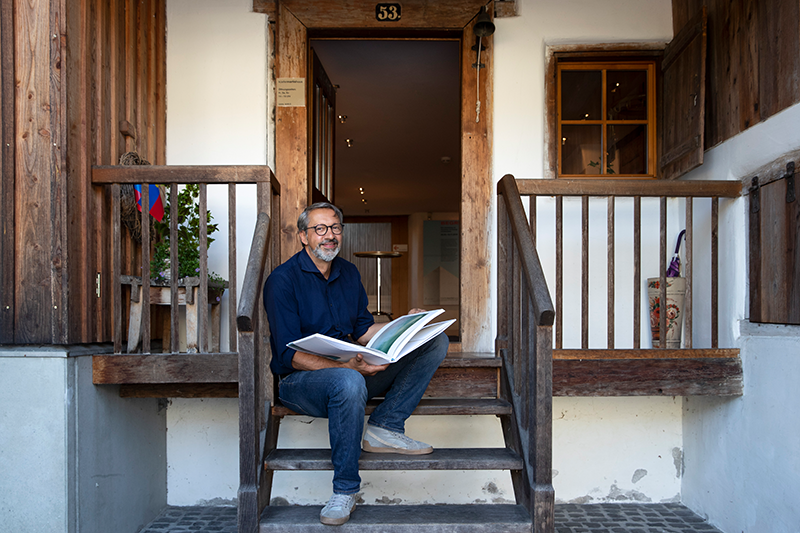
Were there certain events or stations that were formative for your career?
I’ve always enjoyed philosophising, but if it gets too esoteric, I drop out. Practical relevance has always been important to me, and even during my studies, I sought a balance to intellectual work in manual activities. Working in carpentry and as a photo assistant not only enabled me to finance my studies, but was always a satisfying change from my Humanities studies. Together with like-minded people, I founded the ‘Applied German Studies Working Group’, organised lectures, workshops, collected texts from students, which we published in a book, doing everything ourselves from printing to binding and distribution. This practical orientation was also very important in the more than ten years I spent at the Jewish Museum. In particular, the large projects dealing with the former Jewish quarter in Hohenems and the close cooperation of the museum team with various artists are deeply etched in my memory.
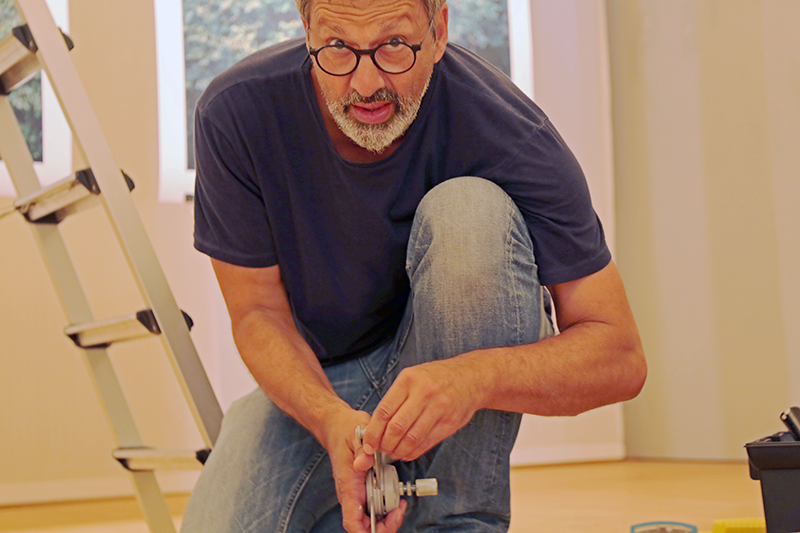
Were there certain people who were formative for your career?
Without the support and patience of my parents and my then girlfriend and now wife, in all probability I would never have finished my dissertation. I am still very grateful to them for that. And above all, I am grateful to the fantastic team at the Jewish Museum with the then director, Eva Grabherr, and the museum educator, Bruno Winkler, who had a decisive influence on my work, attitudes and interests.
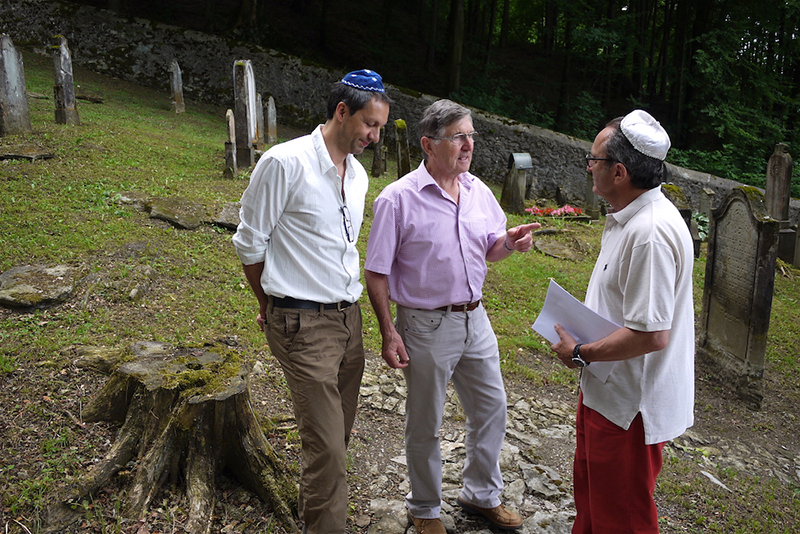
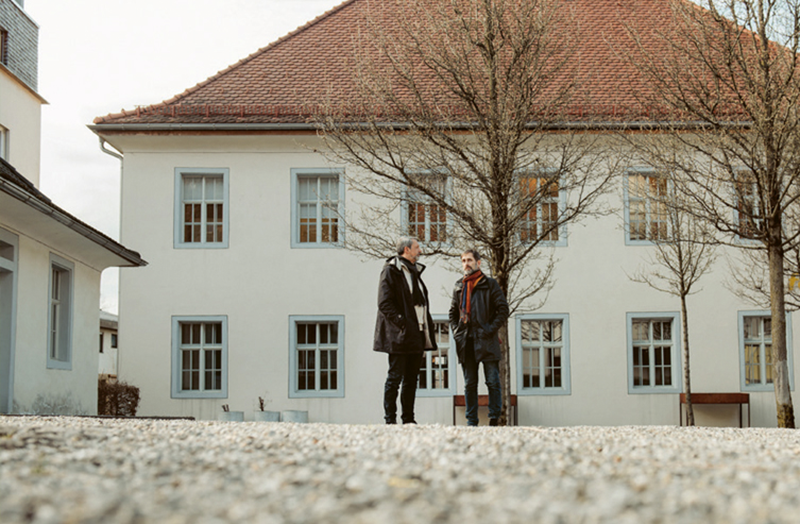
What are your current activities?
On the one hand, the 50% position as cultural representative of the municipality of Ruggell and the management of the Küefer-Martis-Huus keep me very busy. In addition, I work freelance for the project office ‘okay.zusammen leben’ in Dornbirn, which deals with the topic of ‘integration and living together in diversity in Vorarlberg’. I am involved in various projects for the office ‘Rath & Winkler’, where we organise museum projects and exhibitions, such as currently the newly emerging ‘kurathuus’ in Au in the Bregenzerwald, which deals with the baroque building tradition. And for several years I have been part of the citizens’ initiative ‘Visionscafé Hohenems’, where we set creative impulses for a culturally diverse city by implementing actions which are out of the ordinary.
Does what you are currently doing fulfil you?
My work is very fulfilling. On the one hand, I am mentally challenged in many projects, while on the other hand I also have to work manually again and again and take care of very mundane things. This variety – also in terms of content in the different exhibition themes we set ourselves – is exactly what I have always wanted.

Do you think that you yourself have an influence on whether your activities are fulfilling?
Not all people have the privilege of being able to afford to choose what they do. I am in a position now where I can afford it, but it also took me a long time to learn to say ‘no’ and I still find it difficult to do so at times. Of course, there are always jobs that are anything but fulfilling, but they still have to be done. But it’s incredibly liberating when you can detach yourself from burdensome projects or don’t have to take them on in the first place.
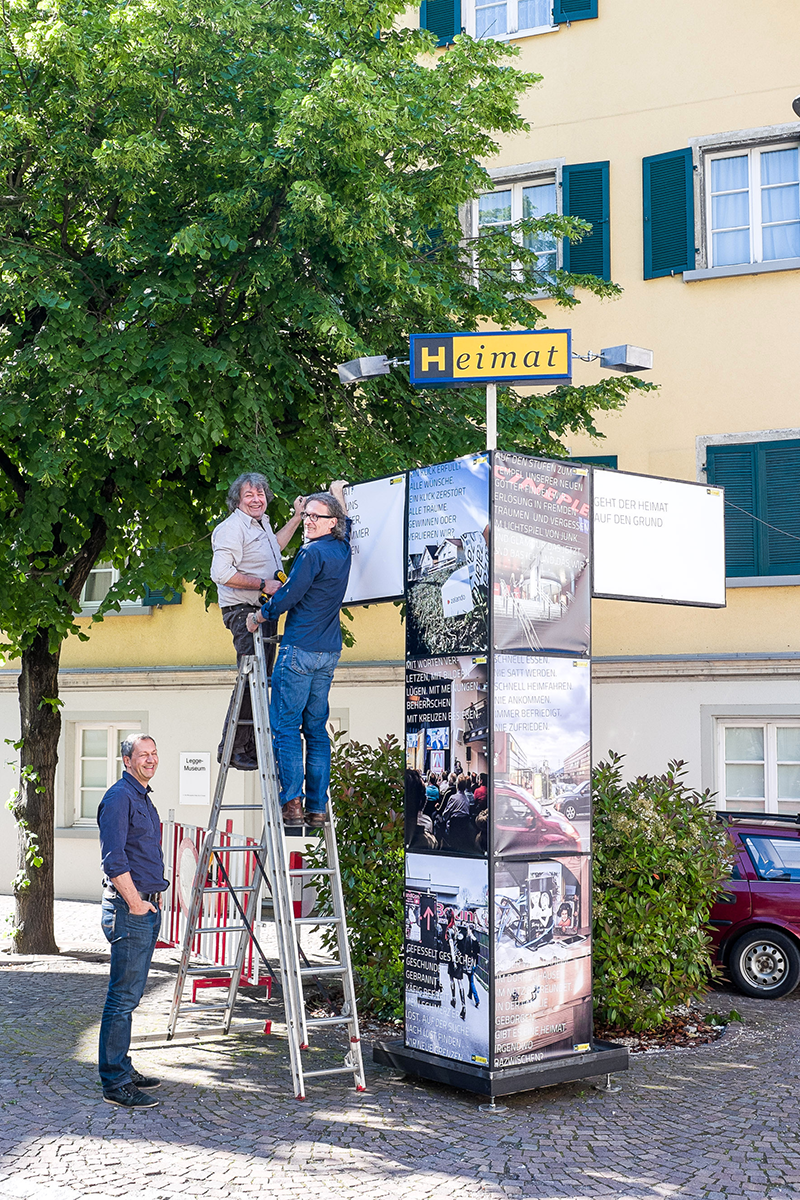
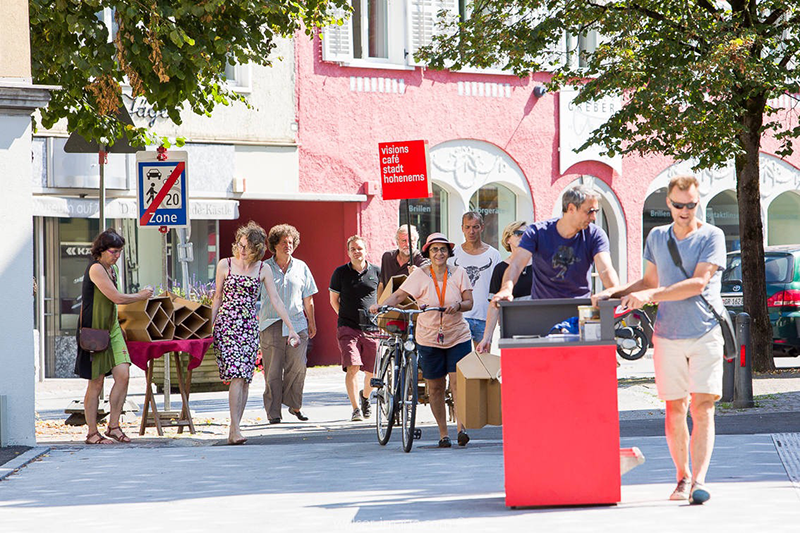
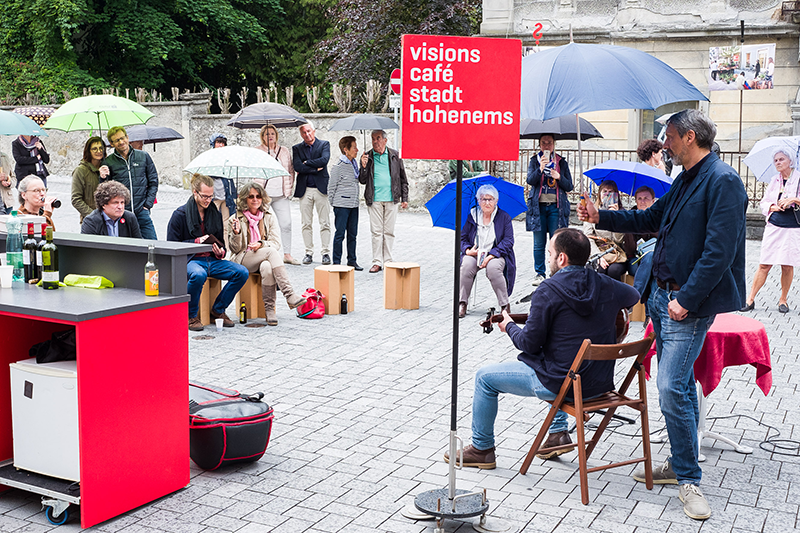
What or who inspires you in everyday life?
People who break new ground, who take a risk, who are humorous and out of the ordinary, who question old thought patterns and open up new worlds. There are always enriching encounters in the immediate environment, but also books and writings by such diverse personalities as Hannah Ahrendt or Sibylle Berg at the moment.
What or who gives you strength and energy in everyday life?
The people in my immediate environment, my wife and children, my friends – and music (from many different genres).
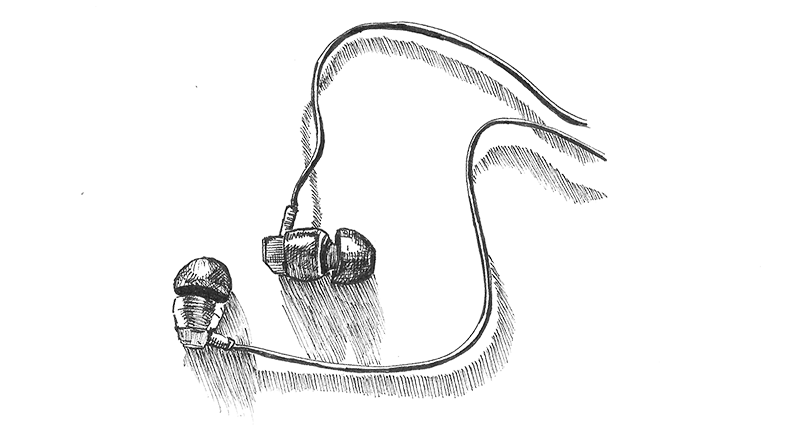
There are ‘magic moments’ when everything seems to fit. Moments that fulfil, inspire and give strength. Moments that confirm that the effort is worthwhile and that what you do is meaningful and valuable. Have you already experienced such moments in relation to your own activities?
There was a formative experience that is deeply engraved in my memory and has had a lasting influence on my work. In 1995, at the Jewish Museum, we turned our attention to the Jewish quarter of Hohenems, which at that time had hardly been noticed. One of our actions was the ‘Exposed Houses’, an idea by the photographer Arno Gisinger, in which the stories of the houses and their inhabitants were projected onto numerous façades. It was a huge effort, and the projections were still running analogue via slide shows at the time. The town centre was closed off on those three evenings, the Israeli ambassador opened the exhibition, and the weather was cool and changeable. The tension as to whether everything would work out was immense. Then, as more and more people streamed into the centre in the darkness, strolling through the squares and streets and spreading an astonished and awestruck mood, we were all overwhelmed by the positive echo that could be heard and felt from all sides. I still get goose bumps when I think of those three evenings.
Do you actively do something for it, so that such ‘magic’ moments can happen?
Basically, my work is a constant attempt to repeat this experience and to make similar experiences possible for as many people as possible.
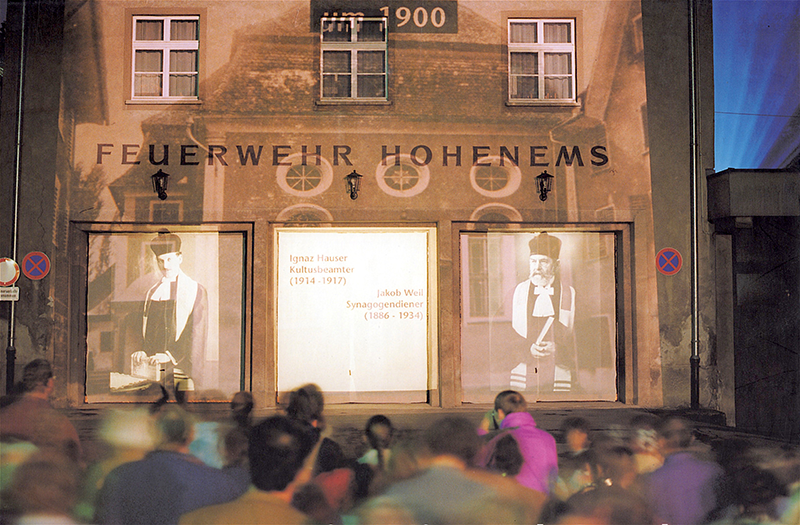
Are there moments when you doubt what you are doing?
I am always doubting what I am doing. I was a very shy person in my youth and a certain insecurity still remains with me to this day. In the meantime, however, I am convinced that doubting is a very important quality that also prevents one from overestimating oneself or taking oneself too seriously. Moreover, doubt as a state of mind is one of the most important achievements of the Enlightenment – accordingly, in contrast to the believer and also in contrast to the nihilist, I would call myself a doubter. What I find completely absurd in this context, however, are people who pretend to be doubters but at the same time adhere to the most abstruse conspiracy theories.
In retrospect, can you find something positive in difficult moments?
It is precisely the accomplishment of the most difficult tasks that usually leads to the greatest feelings of happiness. In retrospect, failure in difficult moments has also often led to my life developing in a direction that I would never have taken otherwise and which was very positive.
Is there anything you would do differently in retrospect?
Often it’s little things, but there are always things, statements or actions that embarrass me. I also have a tendency to put things off until they build up into huge obstacles that are increasingly difficult to clear away. I would like to do that differently, but it is still difficult for me.
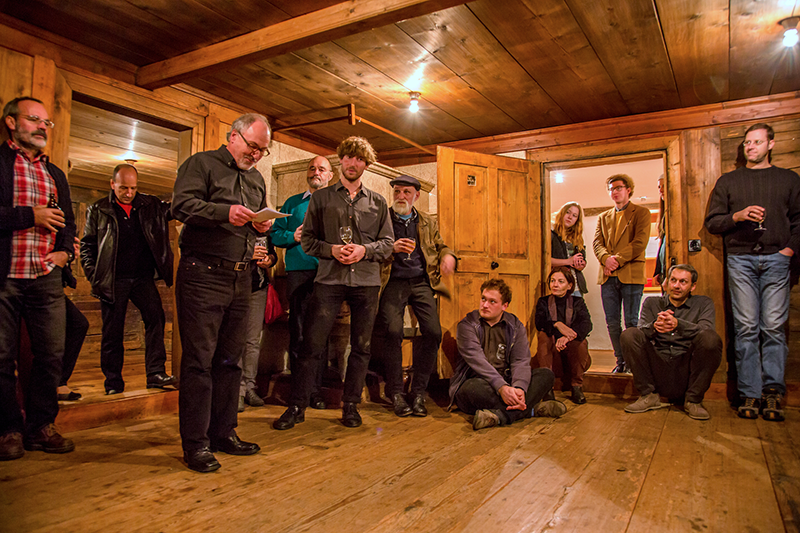
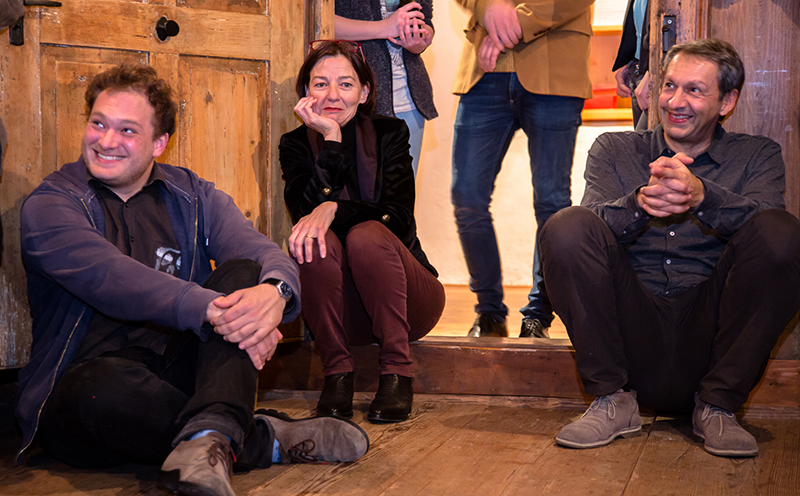
Do you want to contribute to society with your activities?
Yes, I would like to make our world a little better. However, this can probably only be achieved in small ways – for example when an exhibition or an event opens up new perspectives for someone, when current socio-political issues can be discussed objectively, or simply when social cohesion in the village, in the country, is strengthened and enriched through our offerings.
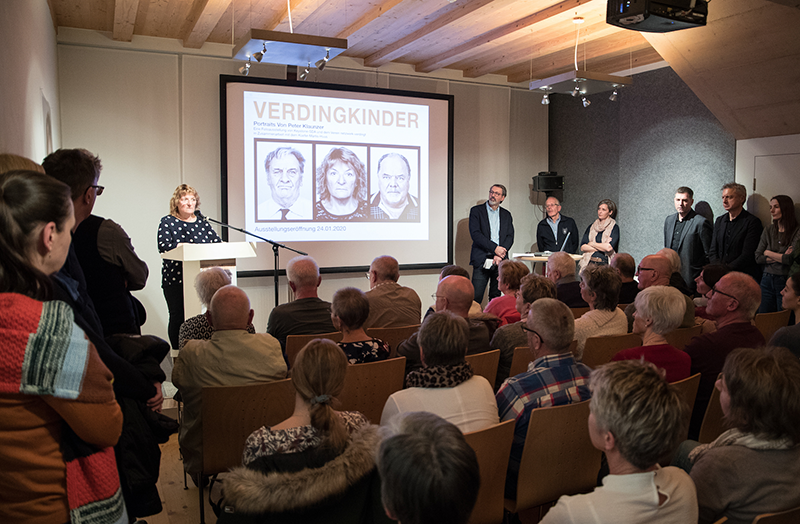
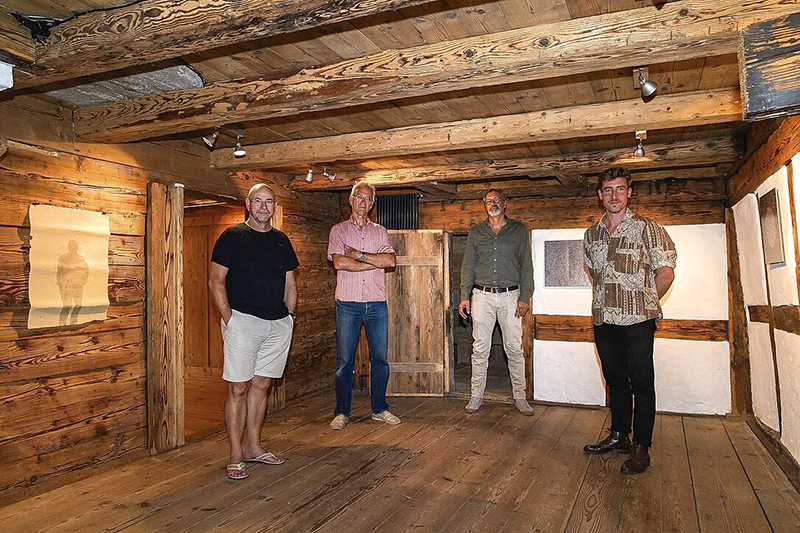
Is the recognition of other people or the public important to you?
Yes, I think recognition is important for everyone. When you feel that what you do is appreciated by other people, it’s good. But I usually work in teams with other exciting people and see myself less as a ‘doer’ and more as an ‘enabler’. That’s why I prefer to take a step back in public and don’t like to be out on my own as the centre of attention. Especially with public praise, it also matters to me if it is for a cause that is important to me and that I can fully stand behind it, otherwise I start to wonder if I might be too compromised.
How well can you live from what you do professionally?
There were times when I barely made ends meet with my family, but at this point in time I can live well from my work.
Is there something you would like to (increasingly) spend time on in the future?
I would love to do an exhibition one day where the visitors have tears rolling down their cheeks from laughing so much.
What are you most grateful for in life?
That my wife approached me more than thirty years ago, that this close partnership of many years has developed from that moment, and from which we have been given me two wonderful children. That is a miracle that I would wish on anyone.
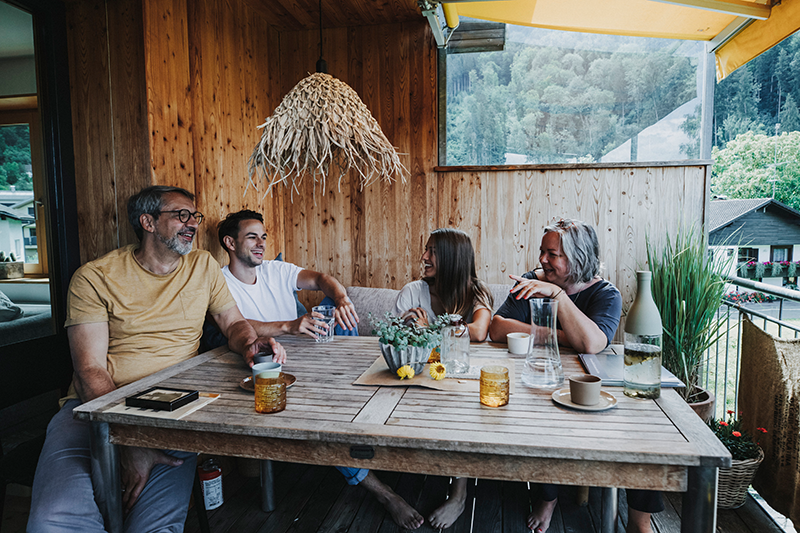
Interview
Laura Hilti, January 2021
Links
Küefer-Martis-Huus
Jüdisches Museum Hohenems
Okay.zusammen leben
Visionscafé Hohenems
Recommendations
Hannah Arendt im Gespräch mit Günter Gaus («Zur Person», 1964)
Sibylle Berg: GRM. Brainfuck. Roman. Kiepenheuer & Witsch 2019
Thomas Bauer: Die Vereindeutigung der Welt. Über den Verlust an Mehrdeutigkeit und Vielfalt. Reclam 2018
Thomas Piketty: Kapital und Ideologie. C.H. Beck 2020
Credits
Portrait photo/ In front of Küefer-Martis-Huus: Tatjana Schnalzger
During the exhibition set-up: Adam Glinski
Illuminated houses: Florian Ebner
Interview with Robert Fabach: Ursula Dünser
Project «Haimat?»/ Open-air concert/ Bar shifting action: Dietmar Walser
Opening of the project series ‘What remains? – the Emptiness’: Naznin Parvin Sharlin
Opening of the exhibition ‘Verdingkinder’ : Nicolaj Georgiev
Opening of the exhibition series ‘The State of Things’: Daniel Schwendener
In the family circle: Angela Lamprecht
This interview is part of the project ‘Magic Moments’ by Kunstverein Schichtwechsel, in which people are interviewed about their careers, activities and their magical as well as difficult moments.
Curated by Stefani Andersen and Laura Hilti, Kunstverein Schichtwechsel.
Supported by Kulturstiftung Liechtenstein and Stiftung Fürstl. Kommerzienrat Guido Feger.
>>> All interviews
